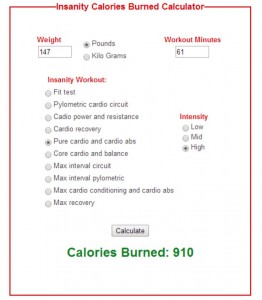
Postpartum exercises that target diastasisrecti are the best. They also help you get back into core training. These exercises involve holding the side plank position with your forearms against a solid wall and shoulder retractions. Hold the position for two counts, then alternate sides. This gentle workout will strengthen your upper muscles and prevent diastasisrecti.
Plank
Planks can help you get your core back into shape after giving birth. It can be difficult to master this technique but it will help strengthen your abdominal muscles, and flatter your back. Planks also build core strength, which is essential for postpartum exercise.
Planks demand that you use your entire abdominal muscles and that you have great balance and coordination. They can tone your lower back as well as your abdominals. A celebrity fitness coach and Zumba influencer, Sucheta Pal, has shared 3 different plank moves for new moms that will help them strengthen their core muscles.
Side plank leg lift
Side plank legs lifts are great for strengthening the pelvic floor muscles and gluteus muscles after birth. It is important to consult with your doctor before beginning a workout, as some exercises can cause pain and discomfort after pregnancy. You should avoid forward-flexion-based exercises as they will increase stress on your pelvic floor and aggravate diastasis recti.

Side plank leg raises are great for postpartum women and can be done right after giving birth. This exercise works the core, gluteus, and obliques. It can improve your posture and strengthen core muscles.
Kegel exercises
If you're looking for postpartum workouts that strengthen your pelvic floor muscles, Kegel exercises might be a good option. These exercises were created by Arnold Kegel in the 1940s and have become a popular treatment for urinary incontinence, uterine prolapse, and pelvic health concerns. You can also use Kegels to prevent pelvic health issues.
Kegel exercises will strengthen your pelvic floor muscles. They are done by isolating them form the pelvic muscles. They can be done at-home and should be completed within 24hrs of delivery. Start by lying down on your back, with your knees bent. Your feet should be about shoulder width apart. You should hold this position for three count and then return to it ten times.
Walking
Walking is a wonderful way to get your exercise back after pregnancy. Begin with walking with a stroller and gradually increase your intensity. Before engaging in strenuous activities, women should consult their doctor. If the baby was born via c section, she should wait for at least 12 weeks before engaging in any strenuous activity. Women should avoid swimming, high-impact exercise, and heavy lifting until their bleeding stops and they have completed their postnatal checkup.
Walking is a great way for moms to get back into an active lifestyle after childbirth and pregnancy. Jogging is not necessary, but a simple stroll around your neighborhood can provide a huge mood lift. While you're walking, you could also do some exercises to increase your strength, flexibility, and balance. Another option is to do a breastfeeding stretch. This will open your chest and neck muscles. Ten seconds of stretching are required. Then, repeat the process five times.

Yoga
While it is a happy and fulfilling time in your family's life, pregnant can also be stressful. After giving birth it can be challenging to manage daily tasks. Yoga can help. You should wait at least six months after giving birth before beginning yoga classes, as your body is not yet in the same condition as it was before pregnancy.
Yoga can not only strengthen your body but also reduce back pain after a baby. Yoga prevents the muscles and ligaments from being stretched too much. Yoga is a great way for new mothers to bond with babies. Even if your baby does not participate, a yoga class will help you get out your house, reduce stress, and bonding with your partner.
FAQ
What Amount of Weight Can You Lose In A Week?
Your current bodyfat percentage determines the amount of weight you will be able to lose. The first thing to do is to calculate how much weight you want to lose and then find out what your BMI (Body Mass Index) is. Your BMI will tell you how much weight to lose. If your BMI is 25 or greater, you're overweight. If your BMI is more than 30, you are obese.
Your BMI is calculated at 28.7 if your weight is 200. To drop to a healthy range of weight, you will need to lose approximately 70 pounds. To see if you're overweight, visit www.healthyminds.com/bmi/.
Once you know your BMI, you can use this formula to figure out how many pounds you'll lose per week:
(Your Goal Weight - Current Weight)/BMI * 7 Number Of Pounds Lost Per Week
You would need to do 2 weeks of exercise to lose 50 lbs in one month. This is equal to 56 days. Divide that by 7 pounds per week. This works out at 8.3 pounds per week.
You could also try this calculator from www.weightlosscalculator.net. This calculator gives you an estimate of how many calories are needed to lose 1 pound per day.
Is there any difference between intermittent fasting and calorie restriction?
Calorie restriction is a way to eat less than your body needs. Intermittent fasting, on the other hand, doesn't restrict calories. It focuses on eating fewer calories during the day.
Intermittent Fasting is more efficient because you can enjoy the foods you love without feeling guilty.
Both methods have pros and cons. Decide which one you prefer.
How often are people quick?
People who are on a ketogenic diet only fast once a week. But, some people fast twice per week. Some others fast three days per week.
Every fast is different. Some people fast for 24 hours, whereas others fast for 48 hours.
Some people will even travel more than 72 hours. These extreme cases are rare.
Can I eat fruits during intermittent fasting?
The health benefits of fruits are numerous. They are full of vitamins, minerals as well as fiber, antioxidants and other nutrients. However, they contain sugar, which can cause blood glucose to rise. This can lead insulin resistance and weight increase. If you are looking to lose weight through an IF diet you need to choose low glycemic-index fruits such as oranges, pears, berries and melons.
What level of exercise is required to lose weight?
There are many factors that influence the amount of exercise required to lose weight. These include your gender, age, body type and how heavy you are. Most people require at most 30 minutes of moderate physical activity five times per week.
The American College of Sports Medicine recommends that you do 150 minutes of moderate intensity aerobic activity per week. This should be spread over three days.
If you are trying to lose 10 pounds, 300 minutes of moderate intensity exercise per week is a good goal. This includes activities like jogging or running, swimming laps and biking.
Start out with 20 minutes of vigorous physical activity three times weekly if you're just getting started. It could be sprinting, lifting weights, jumping rope or fast walking.
Aerobic exercise helps to build muscle mass and burn calories. Muscle burns a lot more calories than fat. You may be able to achieve your goal quicker by building muscle and losing fat.
Statistics
- One 6-month study showed that simply doing 11 minutes of strength-based exercises 3 times per week resulted in a 7.4% increase in metabolic rate, on average. (healthline.com)
- According to Harvard Health, it's estimated that a 155-pound (70-kg) person burns roughly 112 calories per 30 minutes of weight training (5). (healthline.com)
- Another study found that 24 weeks of weight training led to a 9% increase in metabolic rate among men, which equated to burning approximately 140 more calories per day. (healthline.com)
- It's estimated that half of all American adults attempt to lose weight every year (1Trusted (healthline.com)
External Links
How To
How to do Intermittent Fasting (IF)
Intermittent fasting refers to a diet where you only eat one day per semaine, typically Monday through Friday. This is a way to cut down on calories while still getting enough nutrition. This helps you lose fat more quickly than if it were your normal meals for the entire week.
The most common type of IF is to restrict calories on specific days of the week. This means that you would skip breakfast every morning and then consume whatever food you want during the rest of the day. You could choose to eat three small meals per day rather than two big ones.
There are many different forms of intermittent fasting, including alternate day fasting, 5/2 fasts, 8/4 fasts, 16/8 fasts, etc. Each type of intermittent fasting has its pros and cons. Alternate day fasting is the easiest way to start out because you don't have to make any major changes to your lifestyle. However, for some people it can be difficult to follow a strict diet, so they may prefer to explore other options.
If you are interested in starting an intermittent fasting regime, I recommend beginning with alternate-dayfasting. This will allow your lifestyle to be gradually altered while you transition into more extreme fasting.